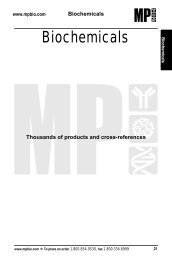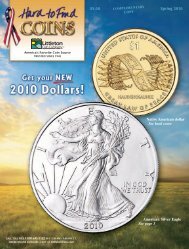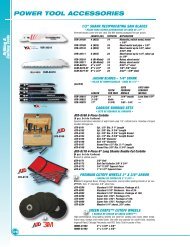SPORT FISH OF OHIO identification
SPORT FISH OF OHIO identification
SPORT FISH OF OHIO identification
You also want an ePaper? Increase the reach of your titles
YUMPU automatically turns print PDFs into web optimized ePapers that Google loves.
o w n b a s s • b r o w n i e • s m a l l i e<br />
s m a l l m o u t h b a s s<br />
Micropterus dolomieu<br />
<br />
IDENTIFICATION: When mouth is closed, the lower<br />
part of the jaw does not extend beyond the rear of the<br />
eye. Color varies from yellow-green to olive-green with<br />
bronze iridescence. Adults have prominent dark vertical<br />
bars along their sides.<br />
<strong>FISH</strong>ING TIPS: Flyfishing, baitcasting, and spincasting<br />
with a variety of lures are all popular ways of taking<br />
smallmouth bass. Live baits such as hellgrammites, soft<br />
craws, and minnows are also popular. May and June are<br />
the most productive months for smallmouth fishing in<br />
Ohio; however, late summer can be productive for Lake<br />
Erie smallmouth.<br />
ADULT SIZE: Normally 12-15 inches and weigh 1-2<br />
pounds<br />
FOOD: Aquatic insects, crayfish, and small fish<br />
SPAWNING: Occurs in May to early June when water<br />
temperature is 55-65°F. Nests are built in gravel or hard<br />
bottom substrates in 2 to 20 feet of water. The female<br />
lays between 2,000 to 15,000 eggs. The male guards<br />
the nest and the fry for a short time. Young smallmouth<br />
feed on zooplankton and insect larvae.<br />
RANGE AND HABITAT: Thrive in streams with<br />
gravel or rock bottoms with a visible current. Abundant<br />
in the reef areas and rocky shorelines of Lake Erie. Often<br />
abundant in upground reservoirs in northwest Ohio and<br />
in quarries.
















